“People ask what it is,” says Gbolahan Obisesan, artistic director of Brixton House theatre, “and then they’re pleased that it’s not an office block.” A passerby does just that, as I stand outside the building’s dark metallic exterior. Such reactions are symptomatic of the current politics of development in Brixton, where some residents see new buildings as the means by which new money pushes out uses essential to established communities. The theatre, though, offers a way round such issues – it proposes a way of investing in the area that, in theory, could benefit everyone.
Brixton House is the reincarnation of an old south London theatrical institution, Ovalhouse, known for its pioneering fringe productions since the 1960s; a place that nurtured talents including Tamsin Greig, Pierce Brosnan, David Hare and Salman Rushdie, and an early supporter of gay, lesbian and women’s theatre. Ovalhouse strove to connect community, politics and art, helping the first pride festivals in neighbouring Kennington Park and giving space to groups such as the British Black Panther party. Now, by moving a couple of miles from its old location by the Oval cricket ground, it is inserting itself in the charged and fertile territory of central Brixton.
The neighbourhood is one of the nation’s foremost zones of contention in ongoing debates about gentrification. It is a classic case: a celebrated centre of Afro-Caribbean communities, famous for its venues and markets, now finds itself intensely attractive to buyers looking for a bit of urban vibrancy with good transport links.
Prices go up, for homes to buy and rent, and for businesses. Outlets in the markets that once served local people give way to purveyors of niche forms of coffee, bread and home furnishings, with wry names and crisp, well-educated graphics. The very qualities that made these places special get eroded. The communities who made a place what it is find it suits them less and less well.
Opponents of these changes then face a conundrum: how to challenge them without also pitting themselves against things that in normal circumstances would be good, such as jobs, investment and refurbishment of the physical fabric. In principle, everything is possible. It should be achievable to distribute the wealth generated by development in such a way that everyone benefits. In practice, that doesn’t happen very often.
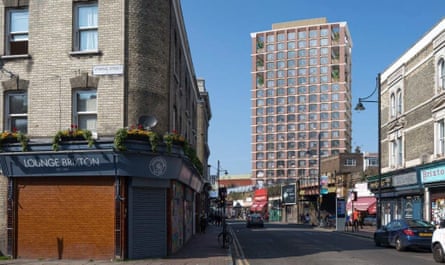
In Brixton, these debates currently crystallise around the proposed “Hondo Tower’’, 200,000 sq ft of office and mixed-use development rising at one end to a height of 20 storeys. It is a work of raw brick and concrete by the celebrated architect David Adjaye, with dramatic diagonal struts and a brutalist-looking atrium containing market stalls. Its developer is Hondo Enterprises, a company owned by Texan property developer and part-time DJ Taylor McWilliams, which controversially bought Brixton Market in 2018. Hondo says that Pope’s Road, to give the project its official name, will deliver 2,000 jobs, 2,000 sq ft of community space, more market stalls and other benefits.
The Save Nour campaign, named after a popular local shop that was served an eviction notice, call it a “massive monstrosity” whose employment opportunities would mostly go to people outside the borough of Lambeth in which Brixton sits. They regard Hondo’s offer to pay £40,000 a year to a “Brixton job training fund” as derisory. In December, a mini-documentary about the project was made by young local film-makers. Hondo, said Hiba Ahmed, a ex-resident interviewed in the film, are “taking a heritage that has been built by diaspora communities… they’re going to do their best to profit from it and if that means displacing people who have been there many years they’re very comfortable with that”.
Last year, Sadiq Khan, the mayor of London, decided to “call in”, or review, the planning permission granted to the proposals. His decision will turn – or should turn – on the question of whether Hondo would truly give back enough of the profit it would extract from being located next to the popular market.
Meanwhile, Brixton House theatre offers a model for bettering a place in a way that strives to engage with the people who live there. This too is partly enabled by property deals; in this case, it forms part of the Somerleyton Road development, where the London borough of Lambeth hopes to build an enfilade of housing blocks between a railway viaduct and what was, before postwar rebuilding, a handsome, tree-lined, Victorian avenue. Some of the money for the theatre comes from the sale of its former site at the Oval.
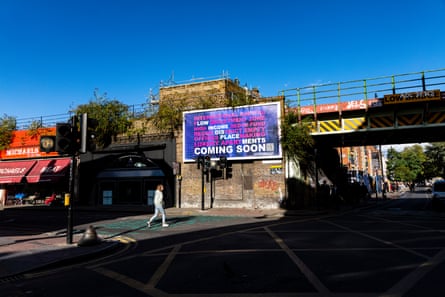
The core aim of the new building is to provide upgraded facilities, in particular two studio theatres, which can be operated separately or together, offering a wide range of different configurations of stage and seating, with better facilities for lighting and sound and improved accessibility. With capacities of up to 220 and 120 respectively, the two spaces represent only modest increases of the equivalent spaces in the old venue. The object is not empire-building, but to continue to do what Ovalhouse did, only better. The hope is to keep ticket prices low, in the range of £10 to £21.
The aim is to encourage a community of performers and artists closely connected to the part of London in which the theatre sits. Rehearsal and meeting spaces on the upper floors, which make a large part of the building, will be available to groups outside the theatre. Carlton Mansions, an adjoining Victorian block of railway workers’ flats, has been converted by another practice, Zac Monro Architects, into affordable workspaces for the creative industries.
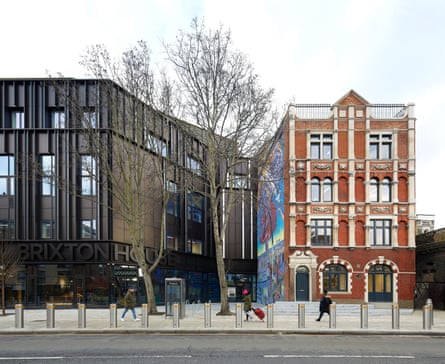
The idea, Obisesan has said, is to be “forward thinking, community focused and rebelliously outspoken”. The history of Brixton, he believes, “is proudly political and its rich blend of cultures will inspire the new theatre to be a cradle for startling stories and extraordinary art”. The opening programme includes Tonderai Munyevu’s Mugabe, My Dad and Me, a personal account of the impact of the Zimbabwean dictator on the author’s life, and Hussina Raja’s Station, which is billed as “an interactive live performance installation set in a traditional south Asian living room”.
In all this, the building, by the architects Foster Wilson Size and the contractor Galliford Try, acts as relatively neutral frame for whatever life the theatre might generate. The architects have gone for a “studio aesthetic”, with something of the spirit of Brixton’s industrial past. The organisation is straightforward: a bar and foyer with a long glass frontage on to the street, a direct ground level route to the two auditoria, a central atrium and staircase around which the upper-floor world of rehearsals will revolve. Animation, apart from the daily living theatre of the building’s users, will come from a coloured LED lighting display on the exterior and digital screens.
Two vigorous works of art stand in contrast to the sober architecture. One is Nuclear Dawn, a mural painted in the wake of the 1981 Brixton riot, painted the full height of the side wall of Carlton Mansions, a document of the fears of the time in which a giant skeleton, clad in the flags of the atomic powers, scatters missiles across a London sky. This has been restored and the new building respectfully cuts back to make a little plaza in front of it. The other work is a newly commissioned, graffiti-like mural that climbs up the lift shaft, a piece on the “energy of Brixton” by the south London artist and illustrator Damilola Odusote.
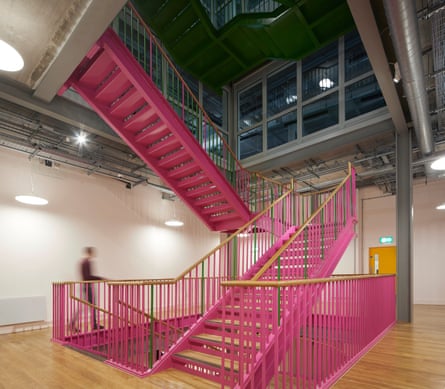
The architecture’s self-effacement is a wiser path than gesture and ego, though the building could do with one or two more signs that this a place of joy and drama. Perhaps then people would be less likely to mistake it for an office building. It could also be taken as a commentary on the dominant black-grey palette that, at Obisesan’s insistence, the central stair has been painted bright pink. Then again, it’s to the building’s credit that it can take this intervention with good grace. You could imagine that a few more tweaks like this would, over the years, really bring the building to life.
The greater significance of the theatre will be what it is and what it does – whether the promises of outreach and connection are fulfilled. Such promises are often made, but, partly because of this theatre’s history, the chances look good that it will keep them. As an architecture critic, my instinct is to favour Adjaye’s muscular and confident design. But in terms of its contributions to a neighbourhood, Brixton House looks like the more promising proposition.
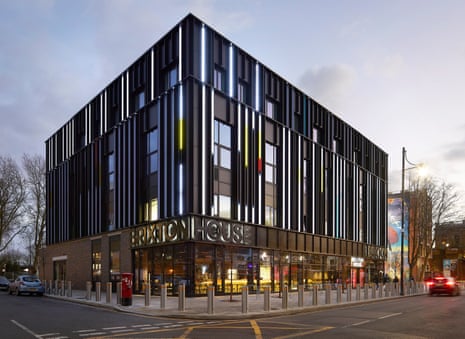
Comments (…)
Sign in or create your Guardian account to join the discussion